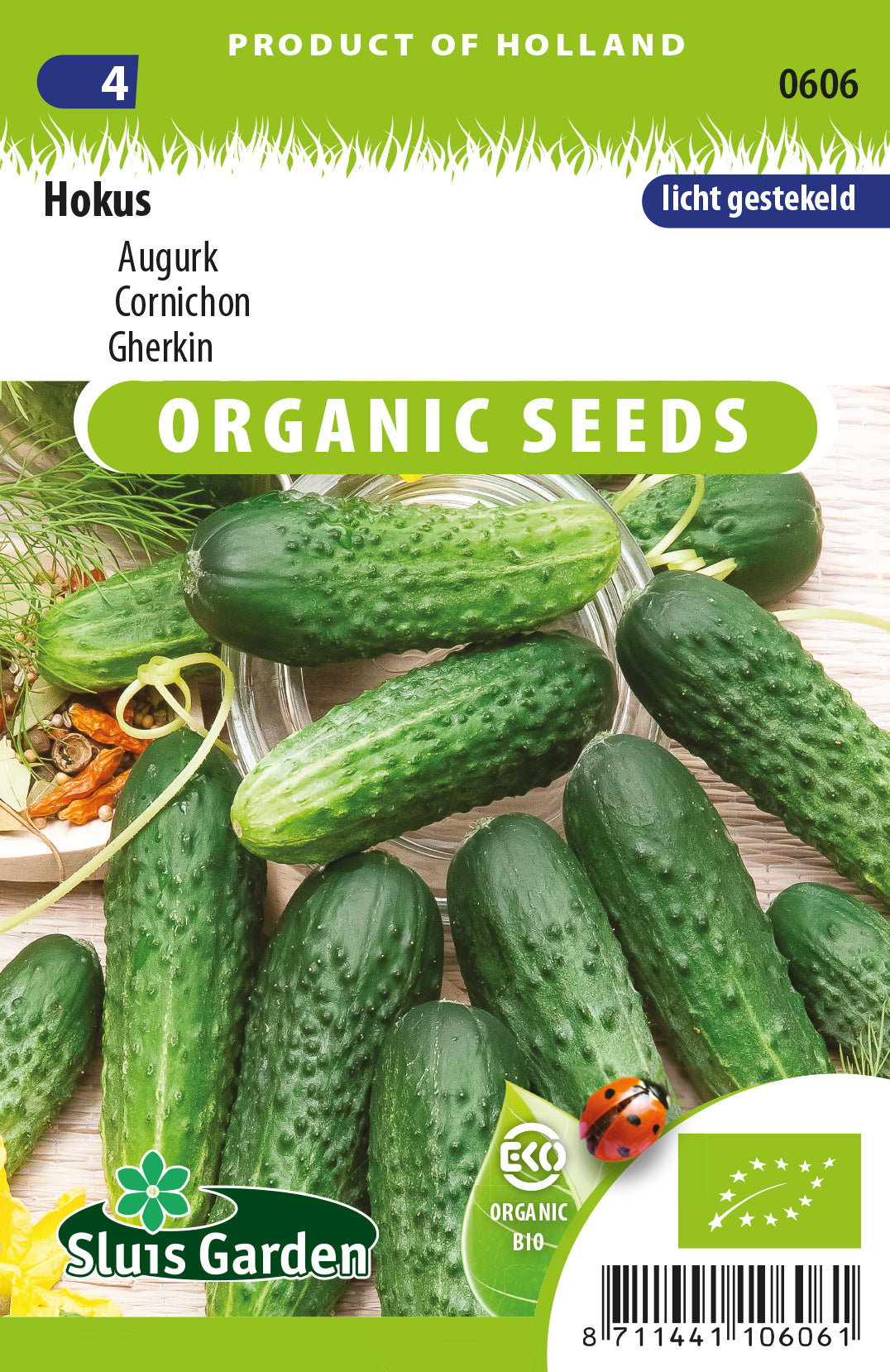1
/
of
1
Gherkin Hokus BIO
Gherkin Hokus BIO
Regular price
1.550 KWD
Regular price
Sale price
1.550 KWD
Unit price
/
per
Shipping calculated at checkout.
Couldn't load pickup availability
Growing organic gherkins, especially the variety "Hokus BIO," involves following natural and sustainable practices without the use of synthetic chemicals. Here's a step-by-step guide to help you grow organic gherkins:
**1. Soil Preparation:**
- Choose well-draining soil with a pH between 6.0 and 7.0. Gherkins prefer fertile, loamy soil. Add organic matter, such as compost or well-rotted manure, to improve soil fertility and structure.
**2. Planting:**
- **Timing:** Plant gherkin seeds or seedlings after the last frost has passed in late spring or early summer. Gherkins are sensitive to cold temperatures.
- **Spacing:** Plant gherkin seeds or seedlings about 18-24 inches apart in rows spaced 3-4 feet apart. Provide support such as trellises or stakes for climbing varieties.
**3. Watering:**
- Keep the soil consistently moist, especially during the growing season. Gherkins need regular watering, and it's essential to maintain soil moisture for optimal fruit development.
**4. Mulching:**
- Apply organic mulch, such as straw or shredded leaves, around the base of gherkin plants to retain soil moisture, suppress weeds, and regulate soil temperature.
**5. Fertilization:**
- Use organic fertilizers, such as well-rotted compost or organic granular fertilizers, before planting to provide nutrients to the soil. Side-dress with compost or a balanced organic fertilizer during the growing season.
**6. Companion Planting:**
- Plant gherkins with companion plants like radishes, beans, and dill. Avoid planting them near potatoes.
**7. Support:**
- Provide support for gherkin plants, especially if you're growing a climbing variety. Trellises or stakes can help keep the plants off the ground and make harvesting easier.
**8. Pest Control:**
- Monitor for pests like aphids, cucumber beetles, and spider mites. Introduce beneficial insects or use organic solutions like neem oil or insecticidal soap to control pests.
**9. Disease Prevention:**
- Practice good garden hygiene to prevent soil-borne diseases. Avoid overhead watering to reduce the risk of fungal diseases.
**10. Harvesting:**
- Harvest gherkins when they are small and tender, usually 2-4 inches in length. Regular harvesting encourages the production of more fruits.
- Check the plants daily, as gherkins can grow quickly, and it's best to harvest them before they become overripe.
**11. Successive Planting:**
- For a continuous harvest, consider successive plantings every few weeks.
**12. Organic Certification:**
- If you wish to officially label your gherkins as organic, follow the guidelines and requirements set by your local organic certification body.
Growing organic gherkins like "Hokus BIO" involves creating a healthy and sustainable environment for your plants, promoting biodiversity, and minimizing the use of synthetic inputs. Following these practices will contribute to the overall well-being of your garden and the quality of your gherkin harvest.
**1. Soil Preparation:**
- Choose well-draining soil with a pH between 6.0 and 7.0. Gherkins prefer fertile, loamy soil. Add organic matter, such as compost or well-rotted manure, to improve soil fertility and structure.
**2. Planting:**
- **Timing:** Plant gherkin seeds or seedlings after the last frost has passed in late spring or early summer. Gherkins are sensitive to cold temperatures.
- **Spacing:** Plant gherkin seeds or seedlings about 18-24 inches apart in rows spaced 3-4 feet apart. Provide support such as trellises or stakes for climbing varieties.
**3. Watering:**
- Keep the soil consistently moist, especially during the growing season. Gherkins need regular watering, and it's essential to maintain soil moisture for optimal fruit development.
**4. Mulching:**
- Apply organic mulch, such as straw or shredded leaves, around the base of gherkin plants to retain soil moisture, suppress weeds, and regulate soil temperature.
**5. Fertilization:**
- Use organic fertilizers, such as well-rotted compost or organic granular fertilizers, before planting to provide nutrients to the soil. Side-dress with compost or a balanced organic fertilizer during the growing season.
**6. Companion Planting:**
- Plant gherkins with companion plants like radishes, beans, and dill. Avoid planting them near potatoes.
**7. Support:**
- Provide support for gherkin plants, especially if you're growing a climbing variety. Trellises or stakes can help keep the plants off the ground and make harvesting easier.
**8. Pest Control:**
- Monitor for pests like aphids, cucumber beetles, and spider mites. Introduce beneficial insects or use organic solutions like neem oil or insecticidal soap to control pests.
**9. Disease Prevention:**
- Practice good garden hygiene to prevent soil-borne diseases. Avoid overhead watering to reduce the risk of fungal diseases.
**10. Harvesting:**
- Harvest gherkins when they are small and tender, usually 2-4 inches in length. Regular harvesting encourages the production of more fruits.
- Check the plants daily, as gherkins can grow quickly, and it's best to harvest them before they become overripe.
**11. Successive Planting:**
- For a continuous harvest, consider successive plantings every few weeks.
**12. Organic Certification:**
- If you wish to officially label your gherkins as organic, follow the guidelines and requirements set by your local organic certification body.
Growing organic gherkins like "Hokus BIO" involves creating a healthy and sustainable environment for your plants, promoting biodiversity, and minimizing the use of synthetic inputs. Following these practices will contribute to the overall well-being of your garden and the quality of your gherkin harvest.
Share

